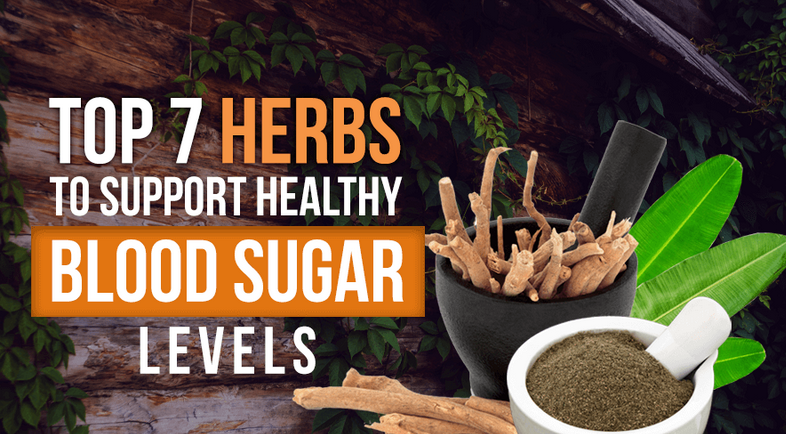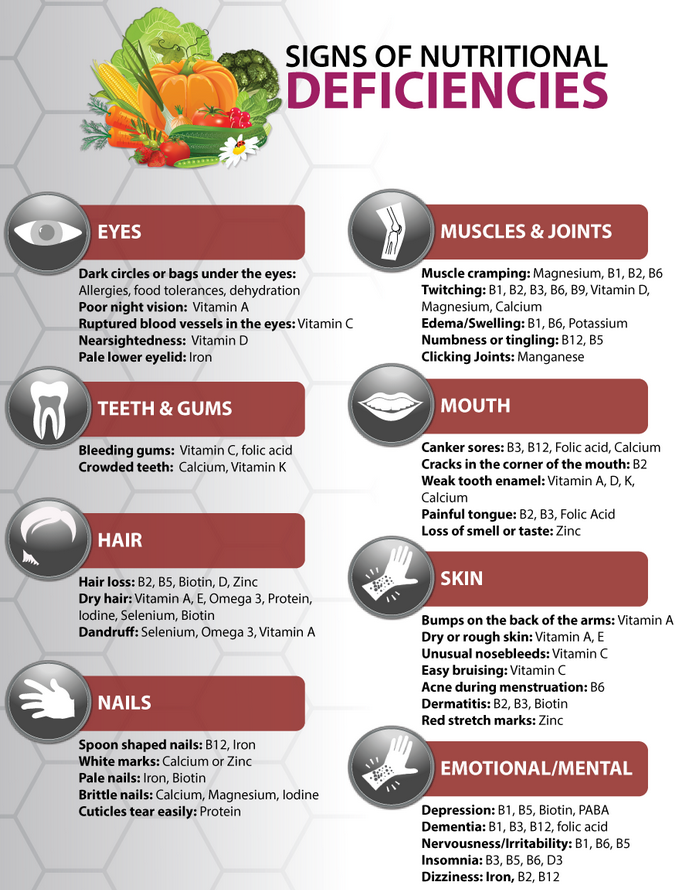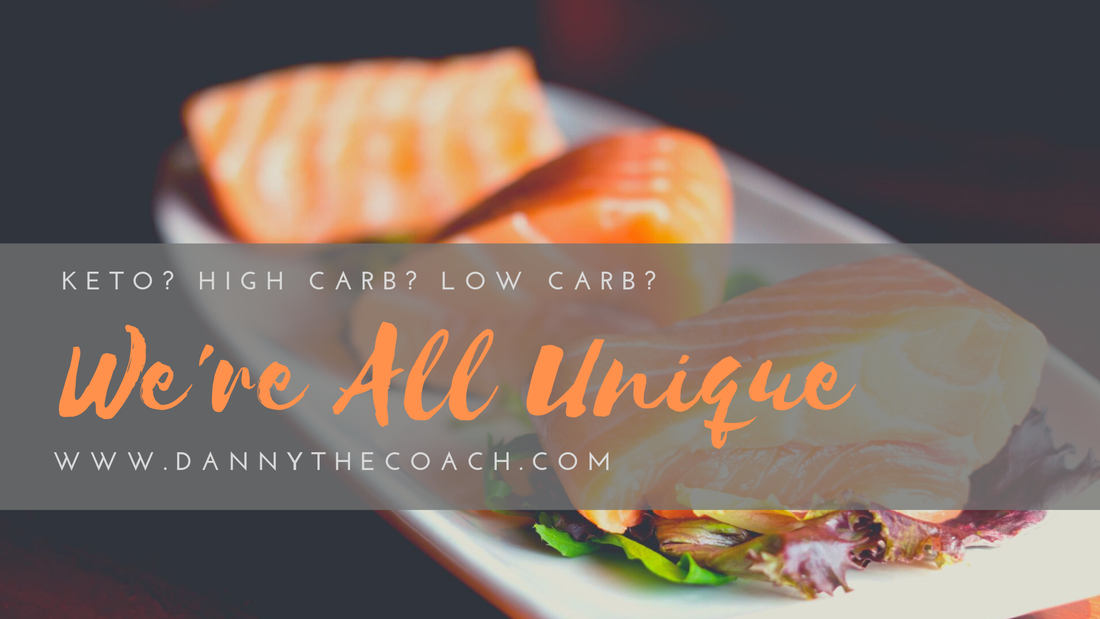What Is Deep Sleep?
Unlike Rapid Eye Movement (REM) sleep, deep sleep is characterized by slow eye movement and a downstate that allows your neocortical neurons to rest. Experiencing deep sleep each night is absolutely essential for waking up refreshed and feeling energized during the day. Sleep & Brain Detoxification
Importance of Melatonin
Melatonin helps to clean environmental toxins and other pathogens from your brain.
Improving Deep Sleep Here a few suggestions:
1. Good Sleep Habits A 2016 review published in Sleep has found that going to sleep and waking up around the same time supports your body’s circadian rhythm, or natural wake-sleep cycle
2. Reduce Stress & Practice Gratitude
3. Get Sunlight During the Day
4. Regular Movement & Exercise
5. Reduce Blue Light Exposure at Night
Dim your light in the evening. Use specific light dimming night bulbs. To reduce blue light exposure from your computer, laptop, tablet, phone, and other electronics, use blue light blocking glasses. Even if you are using these blue light blocking glasses, it’s important that you turn off your electronics at least two hours before sleep, reduce stimulation, relax, and unwind your body and mind. 6. Blackout Your Room
7. Balance Your Blood Sugar
8. Improve Nasal Breathing
Knowing how you breathe at night can be difficult to know since you are sleeping. If you are dealing with congestion, nasal breathing can also become more difficult. 9. Reduce EMF Exposure
Regular EMF exposure can lead to an array of symptoms and health issues. According to a 2012 study published in the Iranian Journal of Environmental Health Science and Engineering, even low EMF exposure can interfere with sleep quality.
10. Optimize Magnesium Levels
Most people are deficient in magnesium and can benefit from supplementation. I recommend using Ancient Minerals Magnesium Lotion with Melatonin and Mag Sleep or Brain Calm Magnesium for better sleep. You may also add some magnesium-rich foods, like greens, avocados, nuts, and seeds, to your diet. Source - click here.
0 Comments
With some of us stuck at home bored or indoors at work, overwhelmed, and in close proximity to the a kitchen or fast food, snack attacks were bound to happen. Are we surprised? Snacking is not always a problem. Yes, intermittent fasting is great and works, and snacking is widely maligned in the ancestral health world at large.
If you're stuck snacking, here are a few things to consider: 1. Set Up Your Environment for Success
2. Practice Mindful Snacking
3. Restructure Your Meals
4. Choose Supportive Snacks
5. Try “Movement Snacking”6. Take a NapWhat is the Thyroid Gland & How It Works
A normal thyroid gland weighs everywhere between 20 and 60 grams (0.7 to 2.1 ounces). Our thyroid is responsible for producing the master metabolism hormones that control every function in our body. It produces two hormones:
What Affects Thyroid Health & Ways to Strengthen It 4 Things That Can Affect Our Thyroid Health These are some key causal aspects that can ruin our healthy thyroid function: Gluten sensitivity can cause our gastrointestinal system to break down, so foods we eat aren't completely digested, which may lead to leaky gut syndrome, allowing bacteria and other toxins to enter our bloodstream. This link becomes more apparent as one study highlights a connection between autoimmune thyroiditis and celiac disease, a gluten-related autoimmune condition that damages our small intestines. There are studies explaining the danger of soy foods such as their anti-nutrients, impact on digestive health and goitrogens that affect thyroid function. Properly or traditionally fermented, organic, non-GMO and unprocessed soy products such as natto, miso, and tempeh are fine - it's the unfermented soy products we should stay away from, like soy "meat," soy milk and soy cheese. When we ingest or absorb bromine, it displaces iodine, and this iodine shortage leads to an increased risk for cancer of the breast, thyroid gland, ovary and prostate cancers that we see at alarmingly high rates today. This phenomenon is significant enough to have been given its own name: the Bromide Dominance Theory. In addition, when food becomes tainted with bromine, it may cause nausea and vomiting. Bromine can be found regularly in a number of places, including:
Many of us are almost always under chronic stress, which results in increased adrenal stress hormones and cortisol levels, and elevated cortisol has a negative impact on thyroid function. Thyroid hormone levels decrease during stressful times. When stress becomes chronic, the flood of stress chemicals, adrenaline and cortisol, produced by our adrenal glands interfere with our thyroid hormones, causing a whole range of health-related issues like obesity, high blood pressure and high LDL cholesterol. It also affects our glucose metabolism. Best Weapon Against Thyroid Problems
Some noteworthy examples include:
The Total Diet Study, performed by the FDA, reported an iodine intake of 621 micrograms for 2-year-olds between 1974 and 1982, compared with 373 micrograms between 1982 and 1991. One probable reason for the reduced iodine intake through the years is its disappearance from our food supply because of iodine-deficient soil How to Increase Your Iodine Levels Naturally Sadly, up to 30% of the population worldwide could be at risk for iodine deficiency. In fact, iodine deficiency is one of the three most common nutritional deficiencies, along with iron and vitamin D. Here are some helpful strategies to increase our iodine levels naturally:
Simple Steps We Can Do to Improve Our Thyroid Health Here are simple ways that we can take in order to improve the performance of our thyroid:
Let's connect if you have any questions.
Your immune system is a complex system that protects you from viruses, bacteria, parasites, and other pathogens. It is a complex system that’s essential for your health and survival. As we face more stressful experiences it is even more important to strengthen your body with good immune support strategies. The 12 strategies below are not supported by the FDA as a treatment for any health condition. But they can be highly supportive for your body’s overall wellness. What is the Immune System If you want to understand your immune system, imagine a network of cells and tissues spread throughout your body involving your cells, tissues, and organ. Your immune system is on a constant lookout for invaders and ready to attack and protect you through a so-called immune response. It is your defense system and inner-army of protection. Immune Response Process Antigens are any substances that are considered to be an invader. They prompt an immune response. They include viruses, bacteria, fungi, toxins, or other foreign materials. When your B lymphocytes, or B cells, spot an antigen, they release antibodies. Antibodies are part of the immunoglobin family and are a type of protein that can lock antigens.
Immune System Problems
Hypersensitivity Hypersensitivity means that your immune system overreacts to something and damages healthy cells. Anaphylactic shock due to an allergen is one example of this. Even if you don’t have any of these immune system problems, unhealthy lifestyle and dietary choices, toxins, and stress can weaken your immune system and thus compromise your immune system response making you more vulnerable to illness and making recovery more difficult. Supporting a Balanced Immune Response Your T cells help to coordinate immune regulation and kill compromised cells. However, T cell function decreases as you age and lowers immunity, especially in older adults. This is why respiratory infections, influenza, and pneumonia cause more risk and are among the leading causes of death in those over 65. Unhealthy lifestyle choices, including an inflammatory diet, lack of exercise, smoking, inadequate sleep, chronic stress, and improper hygiene can also compromise your immunity and make you more prone to disease. Supporting a balanced immune response is critical for your health and well-being. The good news is that it is never too late to start making dietary and lifestyle changes to support proper T cell function and immune regulation. Top 12 Immune Support Strategies
Be Grateful & Positive
Engage in uplifting activities, such as dancing in your living room, playing with your kids or pets, watching a comedy, listening to music, or reading your favorite book. Say a prayer or practice any spiritual activities that feel right for you. If you need help in developing a positive mindset, seek help from a counselor, therapist, or life coach. Prioritize Good Sleep For Immune Support Avoid electronics and instead try board games, reading, relaxing music, crossword puzzles, crafts, coloring, meditation, and journaling. Make sure your bedroom is a safe sanctuary with a comfortable bed, bedding, and pillows. Avoid Sugar & Processed Foods
Practice Intermittent Fasting For Immune Support
Consume Immune Support Enhancing Foods Use mint, low glycemic index fruits including lemon, lime, and berries, healthy fats including avocado, coconut oil, extra virgin olive oil, grass-fed butter, and ghee, clean protein including grass-fed beef, free-range poultry and eggs, wild-caught fish, and wild boar, fermented foods including kimchi, sauerkraut, and kefir, and medicinal mushrooms including reishi, cordyceps, and turkey tail. Choose home-cooked meals whenever possible. Fresh Air, Sunshine, and Grounding
Be sure to step outside and spend time in your garden, yard, balcony, or street in front of your house or apartment as much as you can. Open the windows to let the fresh air in. Grow some plants to allow nature to be present inside. Go for a walk or a jog while keeping the recommended social distance in order to uplift your spirit and improve your immune system during this time. Regular Movement & Exercise Mix up cardiovascular exercises, such as walking, running, biking, or dance, as well as resistance and strength training including weight lifting, CrossFit, TRX, and pilates. High-intensity interval training (HIIT) provides the benefits of both. Good Hydration & Drink Herbal Teas
Optimize Vitamin D Levels
Take Probiotics & Digestive Enzymes Your gut health and immune health are interconnected. Keeping your gut microbiome balanced is absolutely critical for a healthy immune system. Use Vitamin C & Zinc For Immune Support Foods that are rich in zinc include spinach, pumpkin seeds, salmon, and grass-fed dairy. Use an Infrared Sauna For Immune Support Infrared saunas have countless health benefits. They support detoxification, improve immune health, reduce stress, and improve energy.
Source - click here Your immune system is your body’s defense system and works to fend off bacteria, viruses, fungi, parasites, and toxins. Unfortunately, our world is full of toxins that can compromise your immune system and increase your risk of infections, illness, and disease. Fortunately, there are some natural support strategies that support detoxification, weakened immunity, and your health. You will learn how toxins may disrupt your immunity. You will learn about the top 7 toxins that may weaken your immunity. You will learn the top tips to detox and support healthy immunity. Importance of Healthy ImmunityYour immune system is an incredibly important system. It is your body’s defense system, it is your friend, your protector, and your personal bodyguard. Your immune system’s job is to protect you from infections and health problems caused by viruses, bacteria, fungi, parasites, and toxins.
How Toxins Disrupt Immunity
Top 7 Toxins That Weaken Immunity Knowledge is your first step to recovery and health. You must know the sources of various toxins that impact our body and weaken immunity. While it is impossible to avoid exposure to these thing all together, it is critical to minimize your exposure and open up your drainage pathways to eliminate these chemicals from your body. Let’s learn more about the top 7 toxins that may weaken your immunity. 1. Glyphosate
2. Mold & Mycotoxins
3. Phthalates Phthalates are a group of chemicals that are incredibly toxic and weaken immunity. They are the most commonly found cosmetics but may be found elsewhere. According to the US Food and Drug Administration (FDA), they are “used in hundreds of products, such as toys, vinyl flooring and wall covering, detergents, lubricating oils, food packaging, pharmaceuticals, blood bags and tubing, and personal care products, such as nail polish, hair sprays, aftershave lotions, soaps, shampoos, perfumes, and other fragrance preparations”. 4. Heavy Metals
Some common heavy metals that you may encounter include lead found in lead-containing paint, contaminated municipal tap water, cosmetics, contaminated food, and tobacco products, arsenic, found in pesticides, commercially grown produce, apple juice, rice products, glass work, smelting, and semi-conductor production, mercury, found in larger seafood, dental amalgam silver tooth fillings, and some vaccines, cadmium, found in tobacco, metalworking, soldering, battery manufacturing, and contaminated foods, aluminum, found in some vaccinations, antiperspirant deodorant, municipal tap water, canned food and drinks, and some processed foods. 5. Organophosphates
6. Xylenes
7. Endotoxins
How To Detox and Support Immunity When dealing with toxic exposure and a high toxic load, the first step is to do our best to avoid the main sources that weaken immunity. Once we have done that, we want to focus on opening up our detoxification and elimination pathways. Our primary drainage pathways are from our lungs, skin, kidney’s and colon. We literally need to enhance our respiration, perspiration, deification and urination systems to eliminate these toxins from our bodies. Detoxification can sound scary, but once you learn about how to detox and support your immunity, you will realize that it's actually a simple and straight-forward process. Anti-Inflammatory Nutrition Plan
Try Eating:
Intermittent & Extended Fasting
Once you are more experienced with intermittent fasting, try an extended fast, which can last for a few days or even a week or two. During your extended fast, you are only drinking water and possibly other non-caloric, healthy drinks, such as herbal tea, and refrain from food. Great Hydration & Water Filtration
Exercise & Movement
Daily Sun Exposure & Grounding
Infrared Sauna Usage Infrared sauna therapy is a form of sauna that uses infrared heaters that release infrared lights you experience as heat as it gets absorbed through the surface of the skin. It utilizes Far Infrared Technology (FIR), which is a non-invasive light therapy that can penetrate your body as much as three inches. It supports detoxification, offers immune support, and lowers inflammation. Source - click here.
I read this great article and wanted to share it. We've probably all heard about stem cells and the associated stem cell therapy. The article goes into much detail about what stems cells really are and how you can benefit from them, naturally! I summarized the highlights below and provided a link to the article so you can dig into the details.
Why Using SCT? SCT can help to lower inflammation and modulate the immune system. It can help damaged and disease tissue to repair and regenerate. It basically empowers your body to repair itself and allow a better quality of life. Below are the tip 8 ways to naturally activate stem cells and a brief summary. The article goes into much more details if you're interested:
Please read the full article at DrJockers.com.
Please share! If you work at a desk job, here is your guide to staying healthy during the day. Your body was designed for full range of motion, and simply standing does not optimize your physiology either. The key is movement, not simply standing statically. Sitting can also be healthy when done correctly. It is key to always maintain good posture. So try to keep your back straight, your feet on the ground, keyboard close to you, and monitor at eye level. Research from Dr. James Levine shows that for every hour we sit down, our life expectancy decreases by about two hours. For comparison, every cigarette smoked reduces life expectancy by 11 minutes. That means sitting down can be far more hazardous to our health than smoking, which is a shocking revelation for most. But, and this is very interesting, we cannot simply replace sitting with standing. Our body was designed for full range of motion, and simply standing does not optimize our physiology either.
STRETCHING In addition to staying active, it is also very beneficial for your health to stretch. Especially those tight hip flexors, the lower and upper back, and shoulder complex. Find simple stretching exercises that can alleviate pain. Laying over a Swiss ball for a few minutes can assist in stretching that lower back and open up the shoulder blades.
GET CONNECTED
If you have any questions please feel free to connect with DannyTheCoach. For help with creative development, from digital design to social media content, please reach out to PoeticaFilms.com. This video was produced by Poetica Film & Design. Poetica specializes in helping brands to find unique ways to tell meaningful stories. 5 Body Signs of Nutritional Deficiencies Nutritional deficiencies left undetected or without cause for alarm over long periods can lead to life altering health problems. Different areas of your body can signal that something is physiologically wrong. Being in tune with your body's needs and being aware of these signs of nutritional deficiencies are critical to whole body wellness. Optimal vitamins and minerals are required by the body to properly eliminate toxins from the body, promote the health needs of your digestive system, cardiovascular system, metabolism and total body strength. Signs can be both external and internal and can be caused by the over consumption of one vitamin or mineral which can leave your body out of balance and deficient in other minerals. Learn the 5 body signs of nutritional deficiencies below so that you can better detect how your body is functioning. Learn how to enable you to heal faster if you notice something is wrong. These small signs are fixable today and they can prevent you from long term health problems. Sign #1: Hair Loss and Skin Rash Nutritional deficiencies affect a person's entire life. Not only do these nutritional deficiencies lead to a decline in physical health but many problems can influence work and social life. Hair loss and face rashes may impact one's desire to feel comfortable in public settings and may be the first indicator that there is a hormonal imbalance or other physiological concern stemming from inadequate nutrient intake.
Supplements When biotin levels are low, many times other B vitamins are low as well. Such as B2, B6, folate and often B12. For general maintenance a supplement with 300-400 mcg (100-133% of RDA) of biotin daily is a good option. Sign #2: Oral Health Problems Oral health reflects the relationship you have with consuming proper nutrients in your diet. Please consider that many vitamins and minerals are responsible to protect the oral cavity. Nutritional deficiencies can manifest in various ways in the oral cavity and develop into more severe health challenges down the road. For instance, consider the following nutrients and there effects on supporting structures in the oral cavity:
These symptoms of nutritional deficiencies are often associated with vegetarians who do not consume enough essential nutrients through diet because animal products contain many of the fat soluble vitamins needed to maintain oral health. Individuals also susceptible to nutritional deficiencies in which symptoms manifest in the oral cavity include people with gastrointestinal diseases, thyroiditis, autoimmune disorders, and people who consume proton inhibitor medications Related Deficiencies Common vitamin and minerals associated with poor oral health include a complex of B vitamins including riboflavin (B2), B12 and niacin (B3) as well as minerals like iron and zinc. The effects of nutritional deficiencies for each nutrient listed above can result in the following problems:
Remedy Nutritional deficiencies in any of these nutrients can result in weakened immunity and a higher risk for infection. Unless you have specific dietary restraints, excellent protein sources containing iron, zinc and B vitamins are found in wild caught salmon, free-range poultry and organic and free range sourced eggs. Watch out for phytate containing foods such as grains, legumes and nuts. These phytic acids bind to minerals like zinc and iron and reduce our ability to absorb them. Always soaking and sprouting nuts and seeds removes the phytic acids and enhances the bioavailability of the nutrients in the nut or seed. Additionally, be sure to use fermented foods which have a higher amount of B vitamins and good bacteria and enzymes to enhance the digestive process. Add more vegetables to your diet high in vitamin C to boost the availability of iron into the body. Foods include kale, cruciferous vegetables like cauliflower and broccoli, tomatoes, red bell peppers and citrus fruits like lemons and limes. Especially if you follow a specific diet, it is crucial to receive B vitamins from foods like avocados and dark leafy green vegetables. Sign #3: Muscular Cramps in Legs Frequent muscle cramping in the calves, arches of the feet and a stabbing sensation in your toes may be a sign that you are deficient in one of the critical nutrients that work in balance to control other ions. You may just be working up a sweat more often than before which increases your loss of electrolytes. However, whether your cramps occur over short or long term periods this symptom should be treated accordingly.
Remedy Excellent sources of magnesium in foods are found in avocados, pumpkin seeds and unsweetened cacao while Brazil nuts and almonds contain high amounts of both magnesium and potassium. Both calcium and magnesium can be received in combination with a healthy ratio of vitamin D3 to regulate calcium absorption in fermented foods like kefir, yogurt and milk from 100% grass-fed animals. Coconut water and coconut water kefir are great sources of potassium. A good and effective combination includes doing 3 Epsom salt baths each week, 3 days of sunbathing at least 30 minutes with 40% or more of the body getting high quality sun exposure, using fermented foods and drinks like coconut water kefir and an avocado daily. In addition, I recommend using generous amounts of Real Salt on food and hydrating well throughout the day. Consume some dark green leafy veggies each day for calcium and anti-oxidants. Many essential oils have natural antispasmodic qualities, which help inhibit problems associated with spasms, cramps and muscle pulls. Some good ones include lavender, chamomile, rosemary or cypress. You can massage these onto your legs, diffuse them in your home and put them into your Epsom salt bath. Sign #4: Itchy Red Rashes, Acne & Blemishes Several skin problems are associated with nutritional deficiencies. Skin conditions such as psoriasis, eczema, severe acne and even skin pigmentation disorders may have you trying to alleviate the problem with skin moisturizers and anti-inflammatory drugs.
Related Deficiencies The World Health Organization (WHO) recognizes that vitamin A deficiency is a public health concern affecting more than half of the globe and vitamin D is virtually an epidemic considering 90% of the population is deficient in this critical nutrient. Most people are also deficient in the long chain omega 3 fatty acids EPA and DHA as well and this can result in more inflammation in the skin and sebum glands and the development of acne.
Remedy Foods rich in vitamin A include liver, organic eggs from pastured chickens, dark green vegetables, carotenoid containing produce like carrots and sweet potato as well as milk from 100% grass-fed cows. One of my favorite sources of vitamin A is organic, grass-fed butter or ghee. I use these generously each day. I love butter!
A great source of the long-chain omega 3 fatty acids EPA and DHA is through a purified fish oil. I personally recommend and use Nordic Naturals Cod Liver Oil because it has high amounts of fat soluble vitamin A, 1000 IU of vitamin D and a healthy dose of EPA and DHA. #5: Abnormal Sensations in Hands or Feet Have you ever experienced a tingling in your toes? How about a numbness in your hands or the sensation of pins and needles in your feet? These minor and seemingly insignificant symptoms can be a sign of a serious health problem. Symptoms may be slow to develop but become more severe and lead to serious health consequences over time. Related Deficiencies Vitamin B12 & Folate (Vitamin B9): Since the intrinsic relationship between vitamin B12 deficiency and disease was first recognized in 1849, researchers have fought to understand the many metabolic roles this vital nutrient plays in maintaining health. Vitamin B12 is involved in a key reaction that regulates nerve function, supports DNA synthesis and helps regulate specific amino acid levels like homocysteine from becoming toxic. Folate is another B vitamin involved in similar neurological pathways. A deficiency in vitamin B12 and folate are associated with inflammatory conditions throughout the body. However, severe problems that can arise from a vitamin B deficiency like Crohn's Disease may be masked by less problematic symptoms early on. One of these early body signs is neurological damage manifested as numbness or tingling in areas of the body such as hands and feet.
Remedy Foods containing a complex of B vitamins are primarily of animal origin such as meat, eggs, dairy and poultry. This is why vegans and vegetarians are at an increased risk of vitamin B deficiency. Although vitamin B12 is bound in protein in animal products, vitamin B6 can be obtained from meat as well as green leafy vegetables. Some individuals have genetic issues such as pyroluria that cause them to need much higher B6 levels. Other people have a dysbiotic gut and the bacteria are unable to produce adequate B6 levels. This is where fermented foods can be especially helpful sources of highly absorbable B6. Reasons for Nutritional Deficiencies There are several reasons why someone may have nutritional deficiencies. These include a diet that is low in micronutrients and high in sugar and processed foods. The lesser known reasons include low stomach acid and leaky gut syndrome which cause poor nutrient absorption. Additionally, poor blood sugar balance and chronic stress deplete key nutrients and lead to nutritional deficiencies. All of us have had one or more of these factors for a period of time in our life and it is quite possible you are struggling with one right now that is contributing to nutritional deficiencies in your body. Key Nutritional Tips: Above all, consuming a wide variety of nutritional antioxidants sourced from all the colors of the rainbow in fruits in vegetables can help prevent nutritional deficiencies. Consider eating a superfood every day and choose to have a salad as one of your meals. Be sure to choose organic produce to consume foods with the highest nutritional density.
Click here for the entire article, with references and additional info.
10 Tips To Stay Healthy, Sharp & Strong
1. The Plan I am a firm believer that exercise is a powerful instrument that greatly influences your aptitude to be completely healthy. Let me ask you: "Have you made the commitment to work out, but you’re just not sure where to start?" Does that sound like you? If so, I can help you. Let's connect and we'll work on a simple 8 week program can get you going. It will be tailored to your needs, your circumstances, your life. Nothing cookie-cutter here. Everybody is different and has different needs. I'll show you the ins-and-outs of a customized workout routine that fits your schedule AND budget. 2. Isometrics Isometric exercises are contractions of a particular muscle or group of muscles. During isometric exercises, the muscle doesn't noticeably change length and the affected joint doesn't move. Isometric exercises help maintain strength. They can also build strength. The muscles are stable, done in one position so that there is tension but no change in length. Isometric exercise is also known as static strength training. Examples include the plank and side bridge as well as the wall sit and many yoga poses such as chair and tree poses. Isometric exercise is one of the safest strength training techniques you can do. Why? Because, you do not have to lift heavy weight or move / burst with high intensity, rather you control the resistance and you control the results. You have immediate response to your body’s needs. 3. Tracking Inactivity is the fourth biggest killer of adults worldwide, responsible for 5.1% to 12.5% (average 9%) of premature deaths, and walking more could go a long way toward reducing this risk - says the WHO. Studies show that compared to women who averaged 2,718 steps a day, women who walked 4,363 steps per day were 41% less likely to die in the next four years, and taking 5,905 steps was associated with a 46% lower mortality risk. Women who took 8,442 steps were 58% less likely to die in the next four years, but additional analysis revealed benefits maxed out around 7,500 steps per day. So track your steps. 4. Yoga It can improve your brain health and brain function. Yoga can also help lower stress, stave off cognitive decline by strengthening brain regions involved in working memory, advance overall brain function and neuroplasticity, decrease body image dissatisfaction and anxiety, and much more. Research shows experienced yoga practitioners have greater gray matter volume in several brain regions compared to matched controls, suggesting it has neuroprotective effects. 5. H2O Please stay away from any sports drink or any energy drink. They're loaded with sugars, bad sodium and food dyes, toxic ingredients like artificial colors and high-fructose corn syrup. When exercising or doing other strenuous activities, be sure to drink sufficient amounts of pure, clean water to ensure proper hydration. Drink about half of your body weight in ounces. Example: at 180lbs you should be drinking about 90 ounces of pure water. I suggest adding a pinch of unrefined, unprocessed, unfiltered sea salt (electrolytes) and a squeeze of lemon juice (taste and blood cleanser). 6. H I I T I'm a big fan of this type of workout. High-intensity interval training (HIIT), a type of exercise that combines brief sessions of high-intensity activity with bouts of rest, can improve heart function in most people. In a study, a HIIT group also increased their VO2 max, which is the maximum amount of oxygen your body can handle while exercising; this can be utilized as a measure of cardiovascular fitness, by 15%. It can be hard to believe that shorter workouts can lead to similar or even greater gains than longer workouts, but the secret lies in the intensity. By pushing your body to near its maximum, you reap greater benefits faster. 7. Fasting Intermittent fasting covers a variety of different meal timing schedules, but generally speaking involves cutting calories in whole or in part, either a couple of days a week, every other day or daily. When you eat throughout the day and never or rarely skip a meal, your body adapts to burning sugar as its primary fuel, which down-regulates enzymes that utilize and burn stored fat. If you’re new to the concept of intermittent fasting, consider starting by skipping breakfast; eat lunch and dinner within an eight-hour timeframe, and make sure you stop eating three hours before you go to sleep. Let's connect if you have questions. 8. Stretching In just 15 minutes a day you may improve your flexibility and enjoy greater balance, an improved ability to perform daily living tasks and less pain in your shoulders and lower back. The technique you use matters, as doing static stretches just before a workout may reduce your muscle strength. Instead these stretches may be used at a time outside of your fitness routine or while working out "the kinks". It helps to finish your workout with a foam roller or "the Stick" as it also helps improve flexibility, mimics myofascial release treatments and improves blood flow to the area worked; research shows it reduces arterial stiffness, improves balance and increases flexibility 9. AM Workouts If you're in the habit of using time restricted eating, exercising before your first meal of the day will also allow you to take advantage of fasted exercise, which has a number of important metabolic benefits. Exercising while in a fasted state boosts fat shedding and maximizes the impact of AMPK, which not only forces the breakdown of fat and glycogen for energy but also plays an integral role in autophagy. Exercise and fasting together also yields acute oxidative stress, which benefits your muscle, and trigger production of BDNF, which helps rejuvenate your brain. 10. Balance your Meals is Key
Some use carbohydrates to fuel muscle during endurance races, but to gain muscle mass and lose fat, use healthy, high quality fat foods and intermittent fasting together with strategic meal planning and preparation. Muscle growth and definition also requires exercise and optimal amounts of vitamins A, C, D and B complex for protein synthesis, muscle repair and stress reduction. Muscle growth and strength are also important as you age to maintain independence and your ability to easily do activities of daily living, such as climbing stairs and carrying groceries If you have questions to any of these tips & suggestions, let's connect. Contact me anytime and let's start a conversation. I'm here to help. Can't go out? Can't go to the gym? Can't leave your family? BUT you still want to workout? No problem. JOIN our FREE workout session. It will be about 30 min. No equipment needed. If can bring some dumbbells and rubber bands, but it's not required. We'll be doing a bunch of body-weight exercises. Any level of fitness is welcome. I'll try to give you different options. If you like what you see, donations are welcome via Venmo handle "dannythecoach", but not required at all! Let's just have some fun in these crazy times. Facebook Events page for more details on upcoming sessions. Hope you can join me. Stay healthy my friends. Below are 10 super easy exercise options you can do at home, at your local park or pretty much anywhere you are, even the hotel room. All you need is a little bit of dedication, a little dash of will-power and you're on your way. Enjoy. If you like what you see, please subscribe to my YouTube Channel - click here. Here the YouTube Link to the Playlist - click here. Here a few simple yet very effective full-body workouts you can incorporate into your daily routine. Enjoy! Is It Harder to Be Skinny Today Compare to The 80-is?
This article below explains why it may be harder today to be skinny compare to 20 years ago. Keep on reading! If you have questions, let's connect! A study finds that people today who eat and exercise the same amount as people 20 years ago are still fatter. The 2016 study published in the journal Obesity Research & Clinical Practice found that it’s harder for adults today to maintain the same weight as those 20 to 30 years ago did, even at the same levels of food intake and exercise. The authors examined the dietary data of 36,400 Americans between 1971 and 2008 and the physical activity data of 14,419 people between 1988 and 2006. They grouped the data sets together by the amount of food and activity, age, and BMI. They found a very surprising correlation: A given person, in 2006, eating the same amount of calories, taking in the same quantities of macronutrients like protein and fat, and exercising the same amount as a person of the same age did in 1988 would have a BMI that was about 2.3 points higher. In other words, people today are about 10 percent heavier than people were in the 1980s, even if they follow the exact same diet and exercise plans. "Our study results suggest that if you are 25, you’d have to eat even less and exercise more than those older, to prevent gaining weight,” Jennifer Kuk, a professor of kinesiology and health science at Toronto’s York University, said in a statement. "However, it also indicates there may be other specific changes contributing to the rise in obesity beyond just diet and exercise." Just what those other changes might be, though, are still a matter of hypothesis. In an interview, Kuk proffered three different factors that might be making harder for adults today to stay thin.
The fact that the body weights of Americans today are influenced by factors beyond their control is a sign, Kuk says, that society should be kinder to people of all body types. "There's a huge weight bias against people with obesity," she said. “They're judged as lazy and self-indulgent. That's really not the case. If our research is correct, you need to eat even less and exercise even more” just to be same weight as your parents were at your age. Source: The Atlantic - click here Need help getting ready for your ski season? Want better balance and core strength? I may have a few exercises we can try together. Let's connect today! First snow has fallen in many places. Numerous medical and social studies have revealed the number 1 reason why people in the US do not engage in daily exercise. Can you guess what it is? Not surprisingly, it is a lack of time, and the kicker here is that this isn't just a lame excuse. It is actually a consequence of a decidedly American work ethic that has us spending more time at work than anyone else in the industrialized world.
Workplace wellness is a fairly new practice that’s been gaining popularity in corporate America. The result is a growing familiarity with health promotion in offices and organizations where once it was almost unheard of. Typically, workplace wellness programs include health education seminars, medical and fitness screenings, weight loss or management challenges and on-site fitness classes or gym installations. Providing an on-site fitness program offers a solution to the lack of time for exercise and, while employees can take advantage of the health benefits from training on-site, they also experience increased job satisfaction as an added bonus. Active employees are more energetic and productive, display job satisfaction and have reduced chances of developing a chronic diseases. In fact, according to the US National Library of Medicine National Institutes of Health, it is a lack of exercise that is the primary cause of most chronic diseases. Based on this information, it stands to reason then that in-house fitness programs are a smart choice for business owners who want to cut expensive healthcare costs while improving company morale. It is clear that the benefits of having workplace fitness and training programs are numerous. Below is quick list of the reasons why businesses should be taking advantage of this remarkable new health and fitness trend.
Other Great Benefits of a Personal Trainer that your employees could benefit from:
If a workplace wellness program or on-site personal training is on your to-do list, but you don't know where or how to get started, we can help you by getting your new health initiative off the ground. Contact us today. What is The Single Best Thing We Can Do for Our Health? I thought it is time to re-post one of my favorite videos from 2017. I have been noticing a few too many excuses from certain people to get back in shape, so here it goes. What is the single best thing you can do for your health? No doubt, preventative medicine is the best. It is the key to longevity and overall good health. Weighing less, drinking less, smoking less, control cholesterol and blood pressure are all part of that. So please do not minimize your efforts in any of these categories. BUT, what comes 1st? Where do you get the best ROI - return on your investment - in terms of your health? Think about it…What improves your overall quality of life? Anybody? Walk for 30 min a day! Not run a marathon or triathlon…JUST WALK FOR 30 MIN EVERY DAY. It is one of the single most important thing you can do for your health. Most of our 24 hour day is spent sitting, driving, watching TV, sleeping and so forth. Can you invest 30 min of that for your health? Watch the Video Illustration below: Do I need S M A R T Goals for my Health? Short answer is most likely yes, it would make your life much easier. Whether you want to boost your activity levels or implement a new diet, setting SMART health goals can take you closer to success. SMART goals are Specific, Measurable, Attainable, Relevant, and Time-bound. Change Is Hard - But Why? We all know that change can be hard. Especially when it comes to transforming unhealthy habits into healthy ones. If it weren't, the chronic disease epidemic would be non-existent. We would all eat a nutrient-dense, whole-foods diet, get sufficient sleep, manage stress levels, and embrace other aspects of a healthy, primal lifestyle. But, we as a population clearly don't do that. Only about 6% of American's actually follow these 5 basic, healthy habits:
A few Harvard researchers found that men who pursued these five low-risk lifestyle behaviors could add an average of 12 years to their lives; for women, that number jumped to 14. Although there's a clear motivator to live a healthy life, many of us just don't do so. Why? Is there something fundamentally wrong with us that causes us to behave in ways that aren't in our best interests? Not at all. The fact is, we're not always ready to change and, even once we are, many of us don't know how to do it. The change happens in multiple stages. At the beginning, most of us are not ready to take new actions. It's hard. It's inconvenient. It hurts. It feels different. We may feel doubtful or uncertain about whether we really need to change, we may not feel prepared, and we're not all that motivated to make any big shifts in our lifestyles. However, eventually, as we progress through the stages of change, that ambivalence dissolves. We make a decision and we feel motivated to follow through. Either because we had a talk with our children, we spoke to a good friend, we watched an interesting documentary, you name it. This is the stage where goal setting can help the most and it's a great time to try out the SMART methodology. How to Set SMART Goals for Your Health It matters how we define and articulate our goals to achieve them. The SMART methodology aims to help you establish and express your goals by ensuring that they're:
Specific Specific means you've targeted a precise area for improvement. Example:
Measurable Measurable means you can quantify and track your progress towards your goal. When setting your SMART goal, identify how you'll monitor your headway. Ask yourself: "How will I know when I have accomplished my goal?" Example:
Relevant Relevant means it's a worthwhile goal that matches what you want from your life. The best goals align with your values, beliefs, desires, dreams and purpose. Example:
Time-bound Time-bound means that you're setting a deadline for your goal. Without a cutoff date for completion, you’re more likely to procrastinate. The examples above all include clear timelines that orient the goal in the present, not some distant time in the future. FINAL THOUGHTS: Important to remember is that the SMART approach is not a perfect fit for everyone. Around 40 percent of people do great with having objective-oriented goals (like SMART goals). The remaining 60 percent would benefit from a more directional, less specific approach. Embrace SMART goals for your health journey. If you're ready to set SMART goals, consider reach out. We can offer you one-on-one support to create and sustain steady, and even dramatic, change in your life. We Are All Unique
What works for you may not work for me. Keto (high-fat, low-carb) can work beautifully for some, but not for others.
Quick Explanation of the Three. Carbs Carbohydrates are one of two primary energy sources for humans (the other is fat) and include sugars, starches, and cellulose. Carbs are present in both healthy foods, such as vegetables, fruits, and starchy tubers, and unhealthy foods, namely refined flour and sugar. The consumption of refined flour and sugar in excess is potentially harmful and could contribute to the development of many chronic diseases. On the other hand, eating small amounts of refined sugar now and then, ideally in foods such as dark chocolate and real ice cream, is not a problem unless you struggle with blood sugar issues or severe gut dysbiosis. Fats Next to carbs, dietary fats constitute a primary energy source for the body. They also help maintain healthy skin and hair, immune function, and temperature regulation and facilitate the absorption of fat-soluble vitamins. There are four classes of fats found in the human diet:
Protein Dietary protein is not a significant energy source for the body but is essential for providing amino acids for many biological processes, including the assembly of enzymes and signaling molecules, the maintenance of skin and muscle, and for healthy growth and development. Sources of complete protein include meat, poultry, fish, eggs, and dairy products. Now How To Calculate Your Macros First, start with the Carbs, then Protein, then fill in the rest with Fats. 1. Carbs Based on your health status, age, activity level, and other lifestyle factors, select one of the categories of carbohydrate intake:
2. Protein Select the protein intake category that best fits your health status, activity level, and life stage. Meaning, a generally healthy person should aim for 10 to 20 percent of total calories, while someone who is trying to lose weight, correct blood sugar problems, or gain muscle mass could aim for 20 to 35 percent of total calories. Example: If you are a man looking to lose weight, you may aim for 25 percent of calories as protein. Multiply your daily calorie intake, 2,500 calories, by 0.25 (625 protein calories). Then divide by four (as with carbs, there are four calories per gram of protein) to get your daily recommended protein intake, in this example, 156 grams. 3. Rest should be Fats Once you've determined your ideal carb and protein intakes, fill in the remaining gap with fat. And there are nine calories in one gram of fat. Adjust the types of fats you're consuming based on your genetics and health status. For the full article, in depth details, resources and references, go to Chris Kesser's website. Source - click here. Declining muscle mass is part of aging, but you are not helpless to stop it. Muscle aging may start at a relatively young age. By the time you’re in your 30s, age-related muscle loss (sarcopenia) may already have begun if you've neglected to take proactive steps to prevent it. Your muscles help keep your metabolic system intact, and maintaining muscle mass helps protect you against metabolic and hormonal decline, obesity, diabetes, and cardiovascular disease. With appropriate diet and exercise, especially strength training, you can avoid and even reverse age-related muscle loss. We all know the saying, "Two things for certain in life are death and taxes"… but in fact we should add "losing muscle mass", too. Age-related muscle loss, is a natural part of aging. After age 30, you begin to lose as much as 3% to 5% per decade. Most men will lose about 30% of their muscle mass during their lifetimes. Less muscle means greater weakness and less mobility, both of which may increase your risk of falls and fractures. But just because you lose muscle mass does not mean it is gone forever. We can indeed increase muscle mass lost due to aging. It takes work, dedication, and a plan, but it is never too late to rebuild muscle and maintain it. Factors One possible contributor to sarcopenia is the natural decline of testosterone, the hormone that stimulates protein synthesis and muscle growth. Think of testosterone as the fuel for your muscle-building fire. The best way to build muscle mass, no matter your age, is resistance training or strength training or weight lifting. Make sure you gradually amp up your workout volume, weight, reps, and sets, as your strength and endurance improve. Always keep changing your routine. Add more weights, less reps or visa-versa. This constant challenging builds muscle and keeps you away from plateaus where you stop making gains. Diet Your diet also plays a role in building muscle mass. Use high quality proteins and fats. Minimize carbs. Animal sources (meat, eggs, and fish) are considered the best, as they provide the proper ratios of all the essential amino acids. You want to stay away from processed meat because of high levels of saturated fat and additives. Insulin Resistance Promotes Muscle Wasting First of all, it's important to realize that maintaining healthy insulin sensitivity is part and parcel of maintaining healthy muscle and avoiding sarcopenia. As you age, insulin no longer prevents your muscle from breaking down between meals and overnight as it normally does when you're young. The same phenomenon occurs when you're insulin resistant or diabetic. The mechanism responsible for this is called mTOR (Mammalian Target of Rapamycin), which is part of the insulin pathway. This is why insulin sensitivity is essential for proper protein building in your muscle. In short, to build muscle, the mTOR mechanism must be activated. If your insulin receptors are insensitive, this cannot occur, and muscle wasting becomes inevitable. The mTOR mechanism can be activated through both diet and exercise. Whey protein (watch out for inferior whey products!) is a highly beneficial dietary component as it not only increases GLP-1, a satiety peptide that promotes healthy insulin secretion and helps your insulin work more effectively - it also boosts human growth hormone (HGH). High-intensity interval exercises and intermittent fasting also promote HGH production in your body. The triple combination of doing high intensity exercises while fasting and consuming high-quality whey protein 30 minutes after your workout is one potent strategy for preventing insulin resistance and muscle wasting. Another lifestyle factor to consider is sensible sun exposure, as vitamin D is critically important for muscle function. (It's also essential for bone health, along with calcium and magnesium.) Vitamin D deficiency also raises your risk for insulin resistance and type 2 diabetes, regardless of your weight. Power Building muscle is not all about strength. You also need power. Muscle power, how fast and efficiently you move, is more connected to the activities of daily living and physical function than muscular strength. A good way to improve overall muscle power is with your legs, since they are most responsible for mobility. Do quicker movements against resistance, like one's own body weight, can be an effective means of developing power. Tailored Program To gain more muscle mass, older men need a structured and detailed fitness program. It should be tailored to the individual with the goals being progression and improvement. It should focus on individual elements like specific exercises, load, repetitions, and rest periods, and should challenge but not overwhelm. You don't want to be sore for 3 days! Sarcopenia Is Not an Inevitable Fate While muscle loss is a natural effect associated with aging, it’s not an inevitable fate. A healthy and active 60 year old can have the muscle mass of a 30-year old, while a sedentary middle-aged person who eats a primarily processed food diet and struggles with insulin resistance or diabetes may have the muscle quality of a 70-year old. Remember, eating real, whole foods and staying active are key, as both will help prevent insulin resistance. In terms of staying active, avoid sitting as much as possible and be sure to engage in resistance exercises. A potent trifecta of strategies that will boost muscle growth is to do high intensity exercises while fasted, and then consume high-quality whey protein after your workout to give your muscles the nutrients they need to rebuild. Sources: Harvard Health & Dr. Mercola Sprinting is one of the essential elements to leading an optimally fit life. When I say sprinting, I mean brief, explosive all-out sprints.
They are the single best activity to promote rapid reduction of excess body fat, achieve fitness breakthroughs, flood the bloodstream with anti-aging hormones like testosterone and human growth hormone, and boost neuron function in the brain. Sprinting is a powerful hormetic stressor - a short, natural fight or flight stimulation triggering that renewal signal that makes you more resilient not just for your next sprint workout, but for all other forms of life stress. Improving your sprint game can help you make an assortment of breakthroughs, from fat loss to fitness peak performance in a variety of activities, and generally making you a more confident, energetic person. When you conduct an all-out sprint, you’re asking your body to perform at a level of metabolic function some 30 times greater than your resting output. Numerous studies have shown that sprinting skyrockets growth hormone levels quickly and reliably and boosts protein synthesis (muscle building or toning) by 230 percent. If you want to get into sprinting, let's connect and I'll help you figure it out. You don't have to be a super athlete, anybody can learn how to sprint. Here a brief outline on how a sprint routine could look like:
|
Author
DannyTheCoach Archives
January 2023
Categories
All
|















































































 RSS Feed
RSS Feed